#Nathaniel Currier
Text

Nathaniel Currier
The Favorite Cat
605 notes
·
View notes
Text

Currier & Ives (American)
Pussy's Return
1868-78
#currier and ives#nathaniel currier#american art#american artist#print making#printing#print maker#americana#modern art#art history#aesthetictumblr#tumblraesthetic#tumblrpic#tumblrpictures#tumblr art#aesthetic#tumblrstyle#beauty#beautiful cats#cats of tumblr#adorable cats#cats#catblr#feline
84 notes
·
View notes
Text

The Favorite Cat, Nathaniel Currier, 1838-48
Hand-colored lithograph
12 3/16 x 8 11/16 in. (31 x 22 cm)
The Metropolitan Museum of Art, New York City, NY, USA
#art#painting#nathaniel currier#cats#19th century#1830s#1840s#lithograph#hand colored#print#animals#american#the met
55 notes
·
View notes
Text
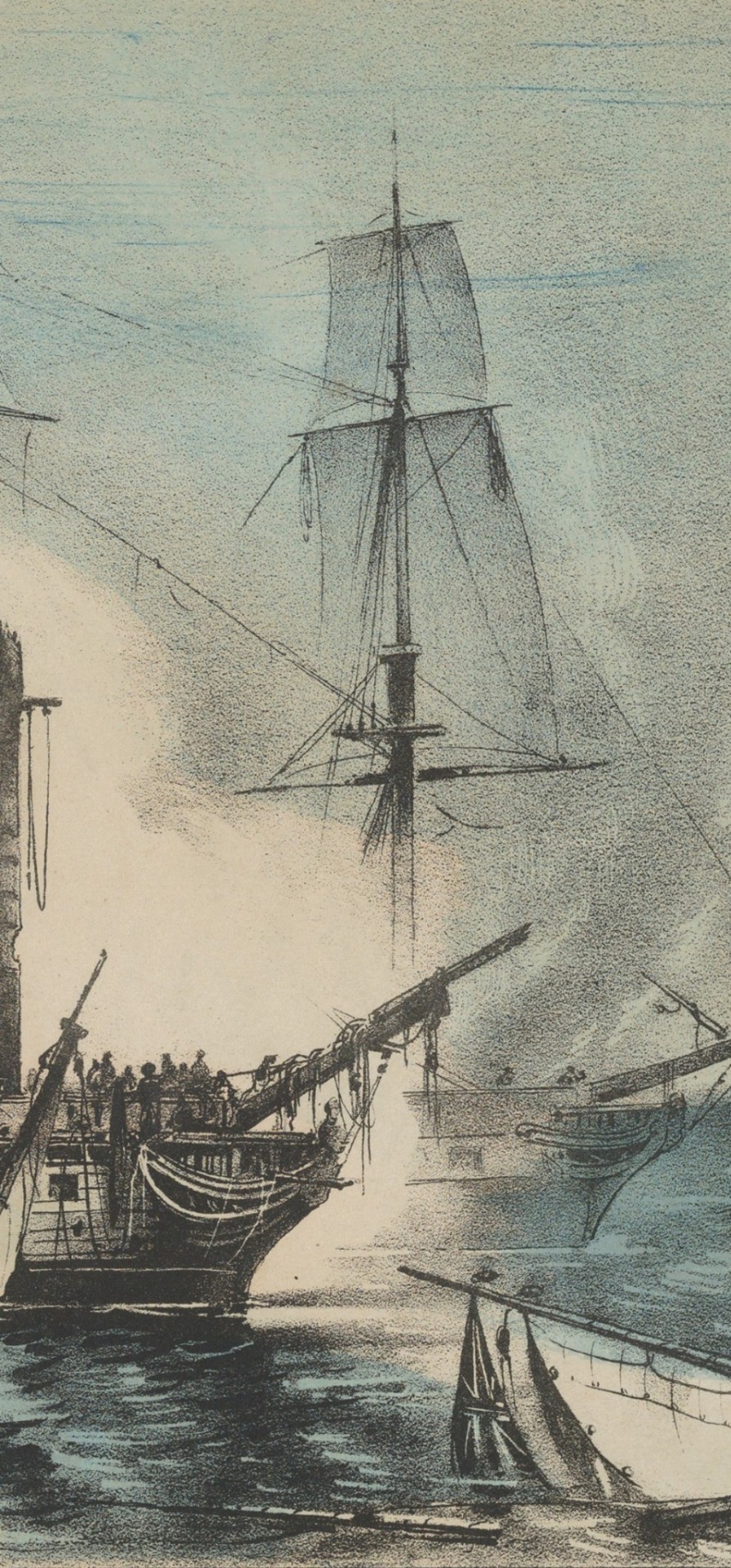
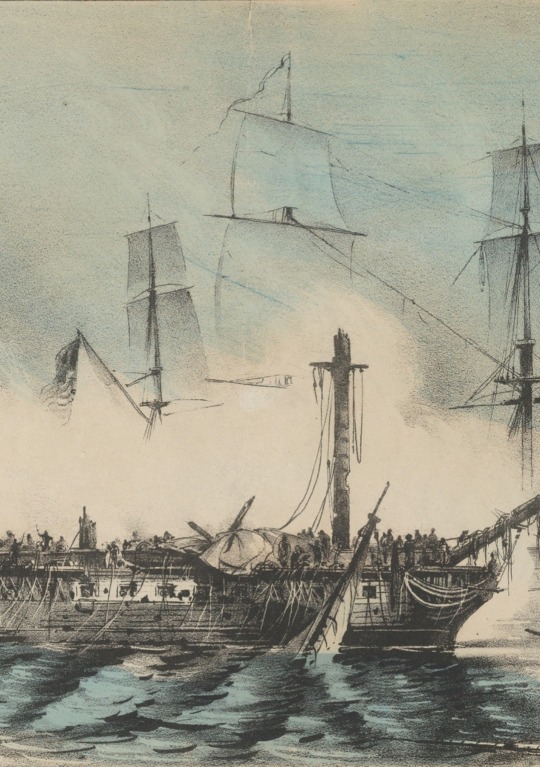
The Guerriere returned our fire with spirit— but it passed too high, and spent its force among our light spars, rigging and sails. Our fore-royal truck was shot away, with two pair of halyards; the flag was hanging down tangled on the shivered mast in the presence of the enemy. [...]
Several shot now entered our hull. One of the largest the enemy could command struck us, but the plank was so hard it fell out and sank in the waters. This was afterwards noticed, and the cry arose:
‘Huzza! Her sides are made of iron! See where the shot fell out!’
— Moses Smith, from Naval Scenes in the Last War (published 1846). Collected in The War of 1812: Writings from America's Second War of Independence, edited by Donald R. Hickey.

The Constitution and Guerriere, lithographed and published by Nathaniel Currier, 1848.
#war of 1812#age of sail#naval battle#naval history#uss constitution#hms guerriere#old ironsides#nathaniel currier#the sea#maritime history#art#1840s takes on the war of 1812#us navy#age of fighting sail
24 notes
·
View notes
Text

Nathaniel Currier, Jesus bearing his cross, 1848
VS
Sebald Beham, Hercules carrying the columns of Gades | The Labours of Hercules, 1545
#Nathaniel Currier#jesus#jesus christ#christ#cross#Sebald Beham#hercules#column#columns#labours#greek myth#greek mythology#mythology#Way of the Cross#via crucis#Stations of the Cross#Way of Sorrows
39 notes
·
View notes
Text

The combat now became warm; gun after gun from the privateer was rapidly fired at the boats, who were taking their stations previous to a simultaneous rush to board. The pinnace had pulled away towards the bow of the privateer; the barge had taken up a position on the quarter; the launch remained on her beam, firing round and grape from her eighteen-pounder carronade, with a rapidity that almost enabled her to return gun for gun to her superiorly-armed antagonist.
— Frederick Marryat, The King's Own
'American Privateer General Armstrong': lithograph print by Nathaniel Currier; c. 1830; text below the title of the print reads "In the harbor of Fayol (Azores) Oct. 26th, 1814. Repulsing the attack of 14 boats containing 400 men from the British ships Plantagenet 74 - Rota 44, and Carnation 18 guns."
#frederick marryat#captain marryat#age of sail#the king's own#age of fighting sail#privateer#cutting out#ship's boats#naval art#nathaniel currier
7 notes
·
View notes
Text

A Sailor's Life - a Sailor's adieu, a Sailor aboard his Ship and a Sailor's return, two by Nathaniel Currier (New York/Massachusetts, 1813-1888) and one by James Bailie (New York, Early 19th Century)
44 notes
·
View notes
Text
Feast Days: St. Bartholomew
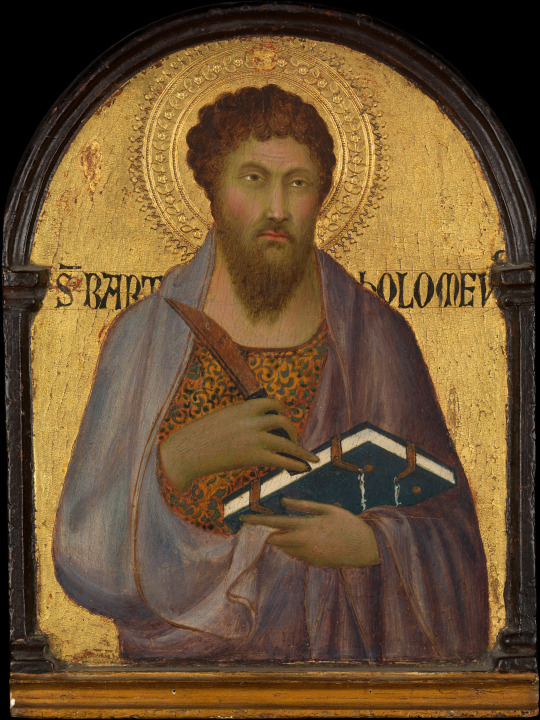
Saint Bartholomew, workshop of Simone Martini (c.1317-1319)
Happy St. Bartholomew's Day!
Today marks the feast day of St. Bartholomew the Apostle -- that's right, one of the OG followers of Jesus! Although he has a pretty miniscule role in Biblical narratives, he is one of the twelve apostles, and so has a heavy load when it comes to patronage. He is the patron saint of butchers, Florentine salt and cheese merchants, house painters, book binders, leather workers, neurological diseases, skin diseases, dermatology, shoemakers, glove makers, farmers, curriers, tanners, trappers, and twitching.
A fair warning: this one isnt' so cheerful. Bart's demise, like many of the saints, is pretty gnarly, and it does have something to do with all this skin/leather stuff going on in his patronage. This day is also associated with an infamous example of religious violence, Catholic vs. Protestant. Read on at your own peril.
His Life
Not a lot is known about Bartholomew's life within Biblical canon. He is believed to be same person as the apostle Nathaniel, who appears in John 1:45-51 and 21:2. He is also mentioned in the Book of Acts.
Much of the tradition around Bartholomew details his trips to spread Christianity. This man sure got around! Two ancient texts cite a trip to India, specifically the Bombay region, where he left a copy of the Gospel of Matthew. However, many scholars doubt that this actually happened, and say that he actually went to Ethiopia or modern-day Yemen. Still other traditions hold that he was a missionary in Mesopotamia, northeastern Iran, and/or central Turkey.
Arguably his most eventful missions trip was to the Armenia/Azerbaijan area in the 1st century CE. Along with his fellow apostle Jude (also called Thaddeus), he is credited with bringing Christianity to the region; and as such, both are venerated as the patron saints of the Apostolic Church of Armenia. His luck ran out here, however, and he was martyred in the region in horrific fashion. Legend holds that he converted the king of Albania, Polymius, to Christianity. Polymius's brother was not a fan of this, and fearing a Roman backlash, and ordered Bartholomew's torture and execution. There are three main stories about his manner of death. The most popular says that he was executed in Albonopolis in Armenia by being flayed (skinned) alive and beheaded. The second account says he was crucified upside-down, and the third that he was beaten unconscious and thrown into the sea to drown. The first legend captures the imagination much more vividly, and as such Bartholomew is most frequently depicted holding his skin -- sometimes he has grown a new skin, other times he is still a skin-less meat man. Many times the old skin still has his face. Woof.
Bartholomew has also come to be associated with the field of medicine, for two main reasons. Firstly, artists past and present have taken advantage of Bartholomew's flayed state to execute detailed anatomical studies of the human body. Secondly, a portion of his relics are stored at the basilica of San Bartolomeo all'Isola in Rome. This was the old site of a temple to Asclepius, which was an important Roman medical site (Asclepius is the Greek god of medicine). Thus, over time, Bartholomew and medicine came to be connected.
The St. Bartholomew's Day Massacre
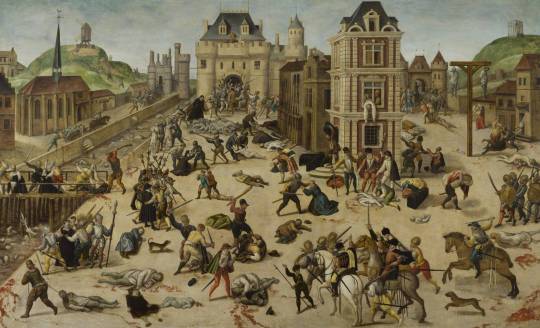
A depiction by Huguenot painter François Dubois, who was possibly an eyewitness (c.1572-1584)
This series mainly focuses on saints' days in the UK, but one does not simply discuss St. Bartholomew's Day without discussing the massacre. This outbreak of bloodletting was part of the decades-long French Wars of Religion, which was fought on and off between Catholics and Huguenots (French Calvinist Protestants). As religion held such an essential role in society and in the machinations of power, the 'type' of Christianity embraced by the state was literally and frequently a matter of life and death. With autocratic governments, unity of church and state, and much less effective means of communication and law enforcement, it was only too easy for hate and violence to take over, and for those in power to turn a blind eye or even participate. There are many contemporary examples we can look to as parallels to this event, and I think with the same conditions, it could happen a lot more often.
The massacre took place in Paris on the night of August 23rd-24th, 1572. Although the causes for the riots are complex and deep-rooted, the main inciting factor was the marriage of Henry III of Navarre, a Catholic, to Margaret of Valois, a Huguenot. They were married on August 18th, and many rich and famous Huguenots gathered in largely-Catholic Paris to attend the wedding. Tensions erupted in scenes of horrific violence, with Catholic mobs attacking, trapping, and hunting down Huguenots in the streets. The violence lasted for several weeks, spreading out through the provinces and other urban areas. Sir Francis Walsingham, Elizabeth I's ambassador to France at the time, was in Paris during the violence and barely managed to escape with his life. Modern estimates cite the casualties from anywhere between 5,000 and 30,000 people. Although the Catholic reaction to the slaughter ranged from outward glee to sickened horror, Protestant countries obviously panicked, and the massacre was used as anti-Catholic propaganda for centuries, 'justifying' Protestant reprisals against uninvolved Catholics. It was yet another terrible event in the brutal European Wars of Religion.
St. Bartholomew's Day and its Traditions
On to more cheerful things!
This day is also called Bartlemas or Bartelmytide.
Emma, the wife of King Canute, supposedly brought one of Bartholomew's arms to England in the 11th century, and it was venerated in Canterbury Cathedral for many years. Most of the information on this is in the past tense, so I assume it is no longer there.

Depiction of Bartholomew Fair, Rowlandson et. al., c.1808
August and the time around St. Bartholomew's Day is the traditional time for markets and fairs. One of the most famous was Bartholomew Fair in West Smithfield, London. A massive spectacle, it served as a place for serious trade, becoming the main cloth trading event in the country; but it also offered entertainment like dances, tournaments, musicians, international curiosities, food vendors, conjurers, wild animals, circus acts, and an all-around good time. It began in 1133 by a charter from Henry I, and originally lasted three days, but during the 1600s it could go for two full weeks! With the change in the calendar in 1753, the fair was moved to September 3rd, and in 1791 they decided four days was quite enough time. It was ended in 1855 for causing public disturbance and the criminal activity it attracted. A less rowdy street fair is still held in Crewkerne, Somerset, at the beginning of September. It dates back to Saxon times and is even recorded in the Doomesday Book of 1086!
There is also some delightful weather wisdom about St. Bartholomew's Day. One rhyme says, "If St. Bartholomew's be fair and clear / Then a prosperous autumn comes that year". Another is connected to St. Swithin's Day (July 15th), and claims "All the tears St. Swithin can cry / St Bartelmy's mantle wipes them dry". Traditional wisdom holds that rain on St. Swithin's Day means rain for the next 40 days, or until August 24th.
Many areas have their own unique ways of celebrating the holiday, such as blessing mead or baking special bread. It's nice to know that a holiday associated with such terrible things can be made into a nice occasion!
If You're Still Interested
There are a few famous depictions of the saint, including Michelangelo's rendering in "The Last Judgement". However, the whole flayed skin thing makes it pretty gruesome, and I didn't want to spring that on y'all without warning. If you'd like to see it, feel free to Google!
History Today's article that details some specific exhibitions from Bartholomew's Fair, including ventriloquists and a pig that could tell time!
Sources
Please forgive the excess of Wikipedia! It's hard to find info on the internet about this holiday, and Wikipedia has been the most forthcoming. It really can be helpful sometimes.
Wikipedia (Bartholomew the Apostle)
Wikipedia (Bartholomew Fair)
Wikipedia (St. Bartholomew's Day Massacre)
My AP European History class (woot)
aclerkofoxford
The Country Diary of an Edwardian Lady by Edith Holden
The Encyclopedia of Saints by Rosemary Ellen Guiley
#feast day series#st bartholomew#history#english history#british history#folk history#cultural history#feast day#saints day
4 notes
·
View notes
Text
Name Meaning

RULES: Search and post the meaning of your OCs’ names (if you made their name up or they go by a nickname, post an explanation of how it came to you)! Bonus if you can find something for their last name too.
Tagged by @katsigian and @wanderingaldecaldo. Thank you both!
Nathaniel - derived from the Hebrew name Netan’el, meaning “gift of God,” composed of the elements natan, meaning “to give,” and ’el, in reference to God. He shares a name with many famous individuals, including Nathanael Greene, Nat Turner, Nathaniel Hawthorne, Nathanael (born Nathan) West, Nathaniel Currier, and Nat "King" Cole.
Jude - Latin, derived from the Hebrew name Judah, from the Hebrew verb ידה, meaning "to praise". A name made popular by Jude Law and the Beatles Song "Hey Jude", after previously being an avoided name due to Judas Iscariot.
Verner - Scottish in origin, finding it's roots in the Germanic name Warner, from war(in) meaning "to guard", and heri or hari "an army". The highest population of the Verner family resided in Pennsylvania starting in the 1840's, and is now predominantly found in the United States.
I gave him the name Nathan simply because I like the name, and it felt like it fit after creating him. Verner was a reference to Conrad Verner from the Mass Effect series, and because I wanted a V last name. Jude was picked much later, and mostly because I liked how it sounded with the rest of the name.
This is an older game so I'm not sure who to tag. Therefore, take this as an open invitation to do it, or do it again!
7 notes
·
View notes
Text
https://www.shop4simplepleasures.com/blogs/news-from-the-designer/bring-on-the-snow
#arthistory#christmastime#nightwear#madeinusa#nashvilletn#onlythebest#loveit#classic#sleepwear#cotton
2 notes
·
View notes
Link
Check out this listing I just added to my Poshmark closet: Deptartment 56 Sleighride.
0 notes
Text

Lithographed and published by Nathaniel Currier
The Favorite Cat
1838-48
#nathaniel currier#currier and ives#american art#american artist#cats#printmaking#print art#cats in art#beautiful cats#americana#cats art#illustrations#art history#aesthetictumblr#tumblraesthetic#tumblrpic#tumblrpictures#tumblr art#aesthetic#beauty
15 notes
·
View notes
Link
Check out this listing I just added to my Poshmark closet: Currier and Ives " The Roadside Mill" Lithograph print NY 1971.
0 notes
Text

Dog meme from somewhere between 1835-56 by the famous lithographer Nathaniel Currier
All right!
1 note
·
View note
Text
Tranh in là gì? Những điều cần biết về tranh in
Tranh In Là Gì?
Tranh in (Printmaking) là quá trình tạo ra (hình thành) một hình ảnh một cách gián tiếp (chứ không phải là vẽ trực tiếp trên giấy) thông qua các kỹ thuật in. Có nghĩa là đưa màu từ khuôn in lên bề mặt tranh(có thể trên giấy hoặc vải).
Những bậc thầy về tranh in trong lịch sử phải nhắc đến Utagawa Hiroshige, Katsushika Hokusai (Nhật Bản), Albrecht Dürer (Đức), Nathaniel Currier và James Merritt Ives (Mỹ)….

Vai Trò Của Tranh In
Nhiều bức tranh rất đẹp nhưng các tác giả không vẽ quá nhiều, nên không đáp ứng được nhu cầu của người yêu hội họa. Vì vậy, bản in ra đời với mục đích in số lượng lớn bản vẽ gốc. Ngoài ra, giá tranh in cũng phù hợp với túi tiền của đại chúng.

Kĩ Thuật Làm Tranh In
Có rất nhiều kỹ thuật in ấn khác nhau, và mỗi kỹ thuật đều có những đặc điểm và vẻ đẹp nghệ thuật riêng. Trong đó bao gồm: khắc gỗ (woodcut), khắc axít (etching), in thạch bản (lithography), in lưới (screenprinting), in độc bản (monotyping), khắc ngòi khô (khắc kim loại, engraving, drypointing), khắc nạo (mezzotint)…
Một tác phẩm in có thể được in bằng một hoặc nhiều bản in khác nhau. Việc sản xuất các bản in này được gọi là chế bản. Có bốn kỹ thuật chế bản: khắc nổi/relief (woodcut, linocut….), khắc lõm/intaglio (engraving, etching, mezzotint...), khắc phẳng/planographic (lithography, monotyping, các kĩ thuật in kĩ thuật số) và in xuyên/stencil.
Việc phân loại bốn loại công nghệ chế bản trên phụ thuộc vào ảnh hưởng của vật liệu in (phần in) lên tranh.

Tranh in tại Việt Nam
Tranh in xuất hiện ở nước ta từ rất sớm. Nghệ thuật truyền thống luôn tự hào về tranh khắc gỗ dân gian: tranh Đông Hồ, tranh Hàng Trống, tranh Kim Hoàng, tranh thờ Huế, tranh Nam Bộ thịnh hành từ thế kỷ 16 đến đầu thế kỷ 20.
Bên cạnh chất liệu khắc gỗ, các kĩ thuật in đá, in lưới, in kính, in kẽm/đồng…được du nhập từ Châu Âu, phát triển lịch sử của nghệ thuật hiện đại và mang lại sự hoàn hảo cho nền in ấn Việt Nam ngày nay.
Thông tin liên hệ
Địa chỉ: Chung cư V-STAR, Đường Phú Thuận, Phường Phú Thuận , Quận 7, TP. Hồ Chí Minh
Email: [email protected]
Số điện thoại: 0978801111
Website: https://tranhincanvas.com/
0 notes
Text
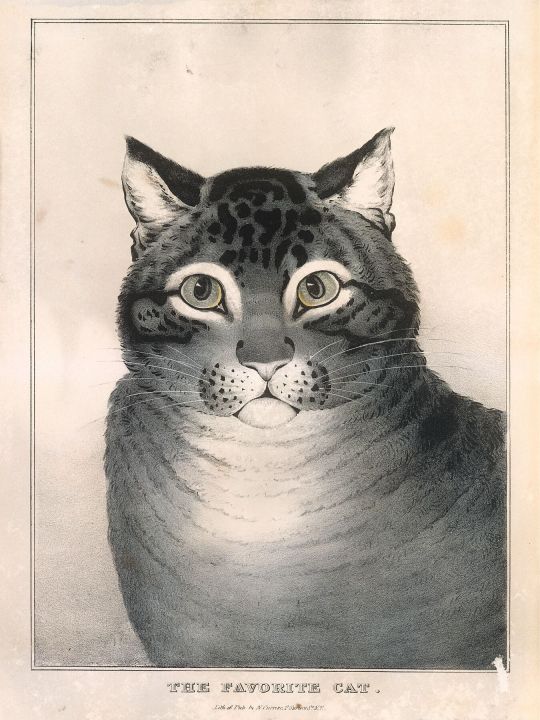
Nathaniel Currier - The Favorite Cat (1838–48)
111 notes
·
View notes